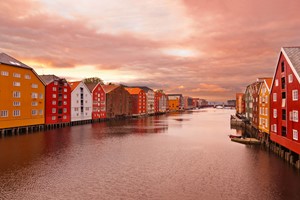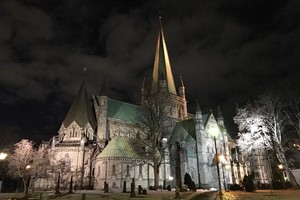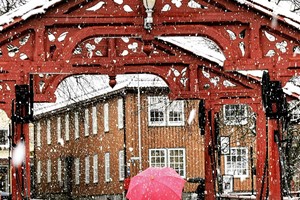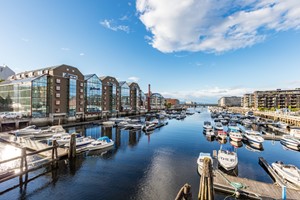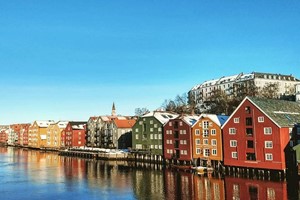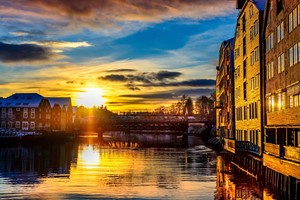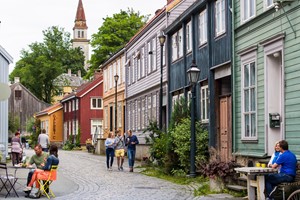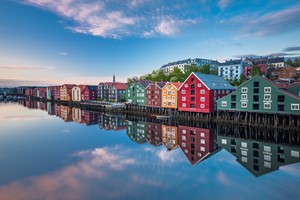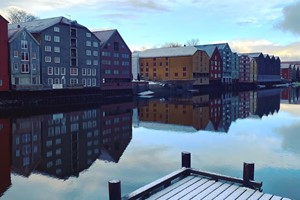Trondheim
Trondheim holds a special place in Norwegian history and culture. It was the first capital of Norway, and is still the city where new kings receive their ceremonial blessing.
Situated by the Trondheimsfjord, the city is surrounded by lovely forested hills, with the Nidelva river winding through the town. Trondheim was named Kaupangen (meaning market place or trading place) by Viking King Olav Tryggvason in 997. It was the royal seat, and the capital of Norway until 1217.
In the late Middle Ages, its name changed to Trondheim. The words ‘heim’ means ‘home’ and the word ‘Trond’ means ‘a good place’, i.e. ‘a good place to live’, or ‘a good home’.
The city has experienced several major fires. As the city mostly consisted of wooden buildings, most fires caused a great deal of damage. The fire in 1651 destroyed 90 per cent of all the buildings within the city limits. The fire in 1681 led to the rebuilding of almost the whole city.
Kristiansten Fortress, built from 1681 to 1684, is located on a hill in the east of Trondheim. It repelled the invading Swedes in 1718, but it was decommissioned in 1816 by Crown Prince Regent Karl Johan. The islet Munkholmen is a popular tourist attraction and recreation area. The islet has served as a place of execution, a monastery, a fortress, prison, and a World War II anti-aircraft gun station.
